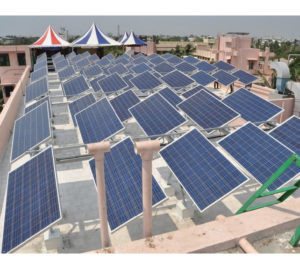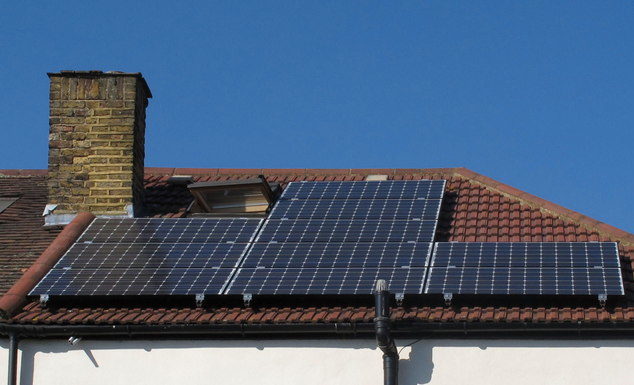Description
The orientation of a building directly affects the amount of solar energy that can be captured, either for PV electricity generation or for passive solar heating and cooling . South facing solar panels produce about 20% more electricity than east or west facing panels.
New buildings should be sited with the long roof axis perpendicular to solar south (not magnetic south, which is 12 degrees from solar south). Also consider setback requirements to not interfere with a development’s capability to harvest solar power across all its dwellings.

1
2
Implementation Phases
New buildings have significant solar south facing roof area for PV, even if the long roof axis is not perpendicular to solar south.
New buildings sited with long roof axis perpendicular to solar south.
Challenges
Some exemptions will be needed for buildings in dense hamlet centers that are required to face streets. If adjacent buildings are south of a new building in this situation, they could be fully or partially shaded, making this requirement moot.
Orientation requirements may necessitate a shift in residents’ and developers’ mindsets on traditional neighborhood development (e.g. aesthetics require a street-facing orientation).
Example Municipalities
Several municipalities have already implemented this action…
- Boulder, Colorado requires new subdivisions to have roof surface oriented within 30 degrees of a true east-west direction while also requiring that a flat or sloped be oriented in a southern direction
- Eatonton , Georgia requires that new buildings must be built to at least exploit solar energy. Streets in a new development are to be aligned on an east west axis where feasible to encourage the maximum amount of solar exposure
Greenhouse Gas (GHG) Reductions
Data
Average emission per Residential unit in Bethlehem, NY: 4 Metric Ton CO2 e per house per year.
Average of new residential buildings from 2010 to 2017:65 buildings per year.
South facing solar panels produce about 20% more electricity than east or west facing panels.[Solar panel performance: how much does roof orientation and angle matter?]
New residential building passive solar emissions reductions: 50 Metric Ton CO2 e/ year [Strategy EE4]
Assumptions
New residential construction emissions reductions from PV and passive solar energy is 20 %.
Methodology
We calculated the:
- The emissions reductions when new residential building are installed with PV
- New residential emissions reductions from PV and passive solar
- Emission reduction when new buildings are oriented properly for solar energy.
Result
60 Metric Tons of CO2 emissions is reduced per year when new residential buildings are oriented in right direction for capturing more solar energy.
This results in MODERATE GHG emissions reductions.

Climate Smart Communities (CSC) & Clean Energy Communities (CEC) Link
No direct counterpart exists for this action in the CSC and CEC frameworks.

Co-benefits
There are multiple co-benefits to completing this action, including:
- Increased sunlight penetration during winter months.
- Increased solar warming during winter months.
- Economic savings from reduced heating and cooling requirements.
Resources
https://news.energysage.com/solar-panel-performance-orientation-angle/
https://energyeducation.ca/encyclopedia/Solar_panel_orientation
https://www.solarreviews.com/blog/best-direction-orientation-solar-panels
https://www.vivintsolar.com/learning-center/best-direction-for-solar-panels
https://library.municode.com/co/boulder/codes/municipal_code?nodeId=TIT10ST_CH5.5REBUCO
https://library.municode.com/ga/eatonton/codes/code_of_ordinances?nodeId=PTIICOOR_CH53SOEN_ARTIINGE_S53-1PU



